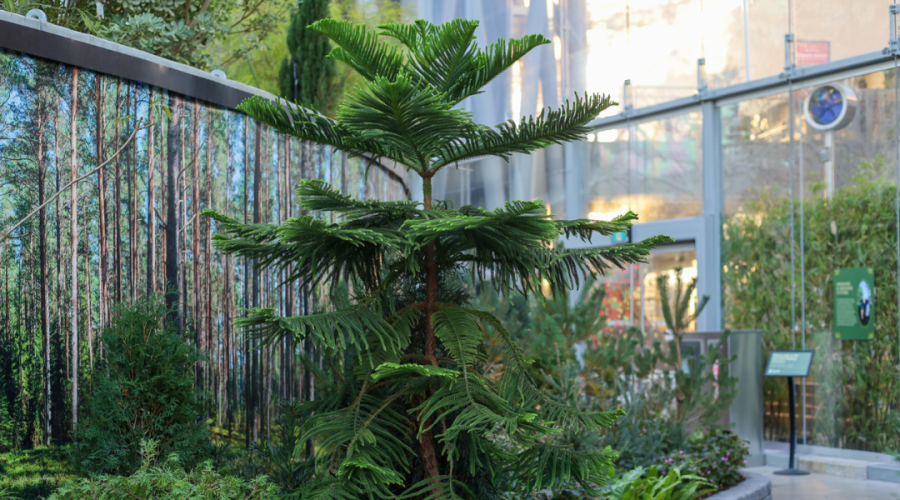Tucked inside the greenhouse at Assiniboine Park is a collection of trees that are rare and remarkable.
“I think there are a lot of people out there that have no idea that these particular trees exist and how incredibly special they are,” says Rhonda Halliday, Indoor Lead Gardener.
Often called the dinosaur tree, the Wollemi Pine, Wollemia nobilis was thought to be extinct for two million years, until someone stumbled on a very small patch of about 100 of them growing in Australia in the mid 1990’s.
“They found fossils of it from before the Jurassic period and now in the 90’s to find the trees themselves is kind of fascinating.”
Rhonda takes care of these Wollemi Pines that arrived at Assiniboine Park four years ago. They are about 15 years old and were brought over from Australia as seedlings by a grower in British Columbia as a way to preserve and protect the species.
“This is special because it’s rare to get a rare tree and it gives us an opportunity to talk about ecosystems and how fragile they are,” explains Gerald Dieleman, Senior Director of Horticulture.
The Wollemi Pines will make their public debut in Winnipeg at Canada’s Diversity Gardens. The trees will be a prominent feature inside the Tropical Biome at The Leaf.
“What’s nice about the Wollemi Pine is that it is so different from everything else we’ve seen in Manitoba and that you might be familiar with,” says Gerald.
The tree has bubbly brown bark that looks like a chocolatey cereal, and rather than prickly needles, these pines have flat leaves that spread out into a criss-cross pattern.
“It looks like a tail of a Stegosaurus which is really neat,” says Rhonda.
Even the way the Wollemi Pine reproduces is fascinating. It develops both male and female cones allowing the tree to self pollinate.
“The female cones always grow above the male cones and with a slight updraft the bright yellow pollen produced by the male cones rises up and fertilizes the female cones,” explains Rhonda.
The Wollemi Pine is still considered one of the most endangered plants on the planet. In 2020, forest fires in Australia threatened the only known population growing in the wild.
“At least some of the species is protected going forward if there’s a natural disaster. There’s a number of public gardens and botanical gardens across North America and around the world that have a few of these trees, and we’re lucky to be one of those institutions,” says Gerald.
The significance of this species and its survival is one of many stories that will be shared at The Leaf strengthening the connection between people and plants.





